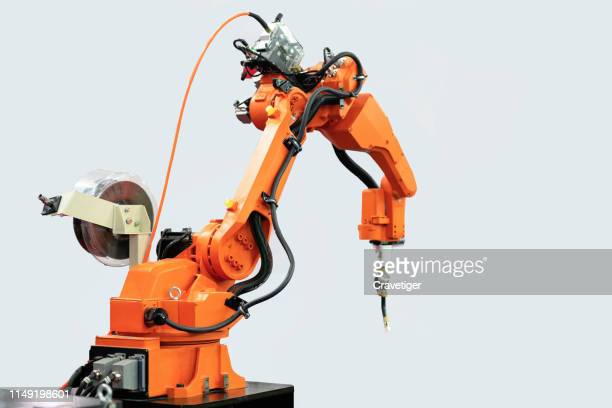
BLS Mechanical Engineers are highly-sought-after professionals with engineering experience and specialized education. They are highly select because they have years of experience and strong education. They can also be managers and leaders. There is a good job outlook for this career path over the next 10 years, with a projected 7 percent increase in available positions by 2030, which equates to an additional 20,900 jobs in the job market. Candidates must have some experience with computer-aided simulation and design software.
Your job duties
The job of a mechanical engineer is to design and plan equipment that produces or uses power. They may also oversee the operation, maintenance, repair, and maintenance of machines. They can work as independent consultants or in large engineering services firms. They may also design refrigeration systems that freeze foods and air-conditioning system for buildings. Below are the details on salaries and employment for mechanical engineers.

Most entry-level mechanical engineers work in an office setting, but may be required to travel to the construction site to resolve a problem with equipment. Basic business principles are required for entry-level positions. Furthermore, mechanical engineers will frequently use computers so it is important that they have a good understanding of IT and computer science. A strong technical skill set is important for analyzing designs and integrating sensors within machinery.
Education required
A Bachelor of Science in Mechanical Engineering degree (BSME), may be a great way of getting into mechanical engineering. This degree is typically four years long, and teaches students the principles of design, testing, and manufacturing. Computer software is also taught to students to create drawings and other designs. The BSME program will allow you to pursue a career in this field.
This field is in good shape according to the BLS. BLS expects that there will be a 4 per cent increase in jobs for mechanical engineering workers between 2019-2029. Engineers will be able to work in management positions or as faculty members at higher education institutions. This occupation earns an average salary of $84,190. Additionally, the U.S. is expected to see a rise in employment for mechanical engineers over the next decade.
Salary
According to the U.S. Bureau of Labor Statistics, the number of mechanical engineers will grow by 5 percent between 2012 and 2022. Although the growth rate is lower than that of all other occupations, it's still quite impressive. In a competitive job market, those who keep up to date with the latest technological advancements will be able to reap the benefits of a highly skilled workforce. There are many factors which can impact the salary of an engineer in mechanical engineering.

There are many factors that influence the salary of mechanical engineers, but mechanical engineers tend to make more than other engineers. In fact, the top 10 percent earned more than $126,430 per year. A career as a mechanical engineer in the computer and electronic products manufacturing industry is possible, with higher salaries. California, New Mexico, and Alaska have the highest salaries currently for mechanical engineers. These states are ranked by their wage levels, which varies widely depending on experience and education.
FAQ
What is the responsibility of a manufacturing manager?
A manufacturing manager must ensure that all manufacturing processes are efficient and effective. They should also be aware and responsive to any company problems.
They should also know how to communicate with other departments such as sales and marketing.
They should also be aware of the latest trends in their industry and be able to use this information to help improve productivity and efficiency.
What is the role and responsibility of a Production Planner?
Production planners make sure that every aspect of the project is delivered on-time, within budget, and within schedule. They also ensure the quality of the product and service meets the client's requirements.
How does a Production Planner differ from a Project Manager?
A production planner is more involved in the planning phase of the project than a project manger.
Do we need to know about Manufacturing Processes before learning about Logistics?
No. No. However, knowing about manufacturing processes will definitely give you a better understanding of how logistics works.
What are the logistics products?
Logistics refers to all activities that involve moving goods from A to B.
These include all aspects related to transport such as packaging, loading and transporting, storing, transporting, unloading and warehousing inventory management, customer service. Distribution, returns, recycling are some of the options.
Logisticians ensure that the product is delivered to the correct place, at the right time, and under safe conditions. They provide information on demand forecasts as well stock levels, production schedules and availability of raw material.
They also keep track of shipments in transit, monitor quality standards, perform inventories and order replenishment, coordinate with suppliers and vendors, and provide support services for sales and marketing.
How can we improve manufacturing efficiency?
The first step is to determine the key factors that impact production time. Then we need to find ways to improve these factors. If you don’t know how to start, look at which factors have the greatest impact upon production time. Once you identify them, look for solutions.
Statistics
- Many factories witnessed a 30% increase in output due to the shift to electric motors. (en.wikipedia.org)
- It's estimated that 10.8% of the U.S. GDP in 2020 was contributed to manufacturing. (investopedia.com)
- You can multiply the result by 100 to get the total percent of monthly overhead. (investopedia.com)
- Job #1 is delivering the ordered product according to specifications: color, size, brand, and quantity. (netsuite.com)
- According to a Statista study, U.S. businesses spent $1.63 trillion on logistics in 2019, moving goods from origin to end user through various supply chain network segments. (netsuite.com)
External Links
How To
How to Use Lean Manufacturing in the Production of Goods
Lean manufacturing refers to a method of managing that seeks to improve efficiency and decrease waste. It was created in Japan by Taiichi Ohno during the 1970s and 80s. He received the Toyota Production System award (TPS), from Kanji Toyoda, founder of TPS. Michael L. Watkins published the first book on lean manufacturing in 1990.
Lean manufacturing can be described as a set or principles that are used to improve quality, speed and cost of products or services. It emphasizes the elimination and minimization of waste in the value stream. Lean manufacturing can be described as just-in–time (JIT), total productive maintenance, zero defect (TPM), or even 5S. Lean manufacturing emphasizes reducing non-value-added activities like inspection, rework and waiting.
Lean manufacturing is a way for companies to achieve their goals faster, improve product quality, and lower costs. Lean manufacturing can be used to manage all aspects of the value chain. Customers, suppliers, distributors, retailers and employees are all included. Lean manufacturing practices are widespread in many industries. Toyota's philosophy is a great example of this. It has helped to create success in automobiles as well electronics, appliances and healthcare.
Lean manufacturing includes five basic principles:
-
Define Value- Identify the added value your company brings to society. What makes you stand out from your competitors?
-
Reduce Waste - Eliminate any activity that doesn't add value along the supply chain.
-
Create Flow – Ensure that work flows smoothly throughout the process.
-
Standardize & Simplify - Make processes as consistent and repeatable as possible.
-
Build relationships - Develop and maintain personal relationships with both your internal and external stakeholders.
Lean manufacturing isn’t new, but it has seen a renewed interest since 2008 due to the global financial crisis. To increase their competitiveness, many businesses have turned to lean manufacturing. Some economists even believe that lean manufacturing can be a key factor in economic recovery.
Lean manufacturing is becoming a popular practice in automotive. It has many advantages. These include higher customer satisfaction, lower inventory levels, lower operating expenses, greater productivity, and improved overall safety.
You can apply Lean Manufacturing to virtually any aspect of your organization. However, it is particularly useful when applied to the production side of an organization because it ensures that all steps in the value chain are efficient and effective.
There are three main types in lean manufacturing
-
Just-in Time Manufacturing: This lean manufacturing method is commonly called "pull systems." JIT means that components are assembled at the time of use and not manufactured in advance. This approach aims to reduce lead times, increase the availability of parts, and reduce inventory.
-
Zero Defects Manufacturing (ZDM),: ZDM is a system that ensures no defective units are left the manufacturing facility. If a part is required to be repaired on the assembly line, it should not be scrapped. This applies to finished products, which may need minor repairs before they are shipped.
-
Continuous Improvement: Continuous Improvement aims to improve efficiency by continually identifying problems and making adjustments to eliminate or minimize waste. Continuous improvement involves continuous improvement of processes and people as well as tools.